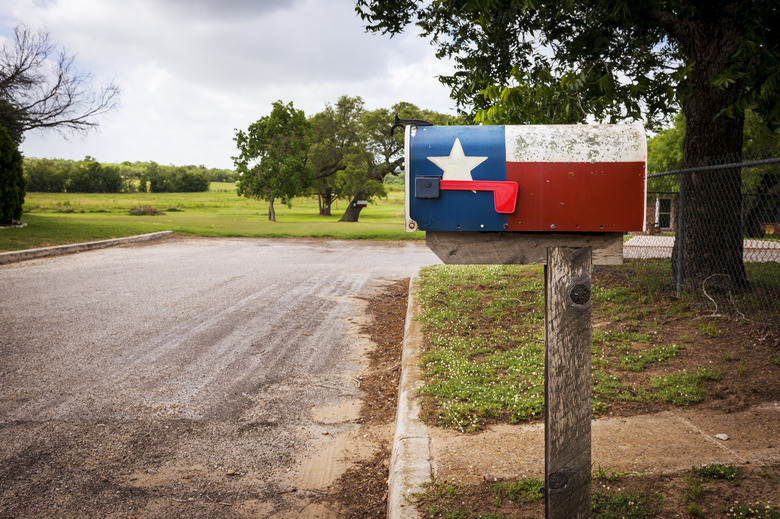Geographic Landforms In Texas
The geography of Texas is diverse. Covering 267,339 square miles, Texas has mountains, marshes, rivers, swamps, plains and plateaus. From forests to deserts, you'll find a variety of landforms in this state. But there are seven main Texas landform types that you need to know.
Big Bend Country
Big Bend Country
Big Bend Country is in the western region of Texas. It's an area filled with plateaus and mountains in the deserts. This is the location of the only mountains in all of Texas. In the desert you experience dry, hot conditions, and in the mountains you experience cold, snowy weather. Along the sides of the mountains trees grow. The total area is 38,000 square miles, and the Rio Grande river runs through, with multiple canyons present as you travel along. Elevations can range in the area from 2,500 to 8,749 feet when you reach Guadalupe Peak. The dry, open areas are rugged plateaus with very short grasses.
Gulf Coast
Gulf Coast
The Gulf Coast exists along the Gulf of Mexico. Large cities in this area include Galveston, Houston and Corpus Christi. The total area is 21,000 square feet and the major rivers running through the region include:
- the Trinity
- Brazos
- Nueces
- San Antonio
- San Jacinto
Many streams flow through the area with salt grass marshes and estuaries through the area. The western portion of the coast is primarily grasslands and prairies. The average rainfall is from 40 to 60 inches a year.
Hill Country
Hill Country
The Texas Hill Country is located in the central portion of Texas. Most of the land is a hilly grassland. It was formerly a plateau, which has evolved into a hilly terrain after millions of years. The land used to be full of multiple springs, but due to human interference, this amount has dwindled down. The San Marcos Springs are the most well known natural landform in the region. The total size of the Edwards Plateau in this region is 31,000 square miles. The average rainfall here is 15 to 34 inches a year.
Panhandle Plains
Panhandle Plains
The panhandle plains are located in the northern region of Texas, named primarily due to the resemblance to the appearance of an upside-down pan. Most of the area is flat and grassy with little to no trees. The eastern portion of the plains receives more rain than the western part. Both the Palo Duro Canyon and Caprock Canyon State Parks are located in this part of the state. The major rivers running through the region include the Pecos, Red, Canadian, Colorado and Brazos. The area of the Pandhandle Plains is 81,500 square miles overall.
Piney Woods
Piney Woods
Piney Woods is in the eastern portion of the state. It's a woodland that has a large forest area, which expands into the nearby states of Louisiana, Arkansas and Oklahoma. The elevation is low with wetlands and hardwood trees. Swamps are common as well. The total area is 23,500 square miles, and the Sabine, Cypress, Sulpher and Red Rivers run through it. The total rainfall for the area is 40 to 52 inches a year.
Prairies and Lakes
Prairies and Lakes
The prairies and lakes region is located in north central and central Texas. Many woodlands run north to south in the area. The grasslands are occasionally interrupted with treed areas. The popular state parks that are found here include Lake Fork, Lake Ray Roberts and Cedar Hill State Park. The total area of the prairies and lakes region is 45,000 square miles.
South Texas Plains
South Texas Plains
The South Texas plains are located in the subtropical regions of the Rio Grande Valley. This area is very dry and filled with thorny brush and grasses. Lakes are found in the South Texas Plains region, along with many marshes and ponds. The Guadalupe, San Antonio, Nueces, Lavaca and Rio Grande Rivers all run through the South Texas Plains, which is 28,000 square miles in area.
References
Cite This Article
MLA
Rumble, Amanda. "Geographic Landforms In Texas" sciencing.com, https://www.sciencing.com/geographic-landforms-texas-7902522/. 23 April 2018.
APA
Rumble, Amanda. (2018, April 23). Geographic Landforms In Texas. sciencing.com. Retrieved from https://www.sciencing.com/geographic-landforms-texas-7902522/
Chicago
Rumble, Amanda. Geographic Landforms In Texas last modified August 30, 2022. https://www.sciencing.com/geographic-landforms-texas-7902522/
